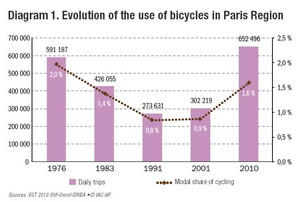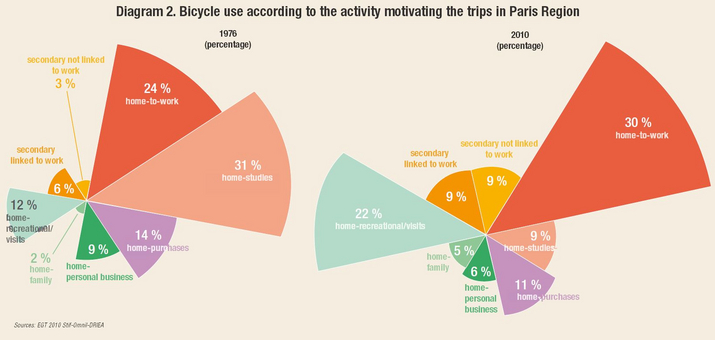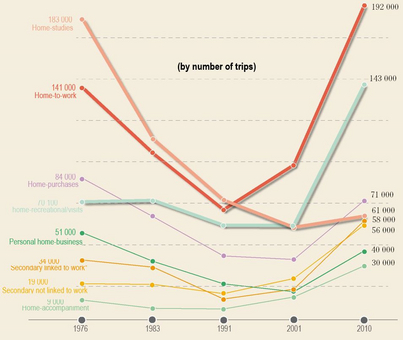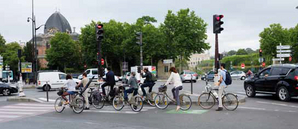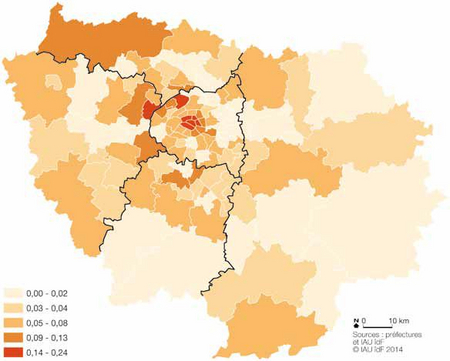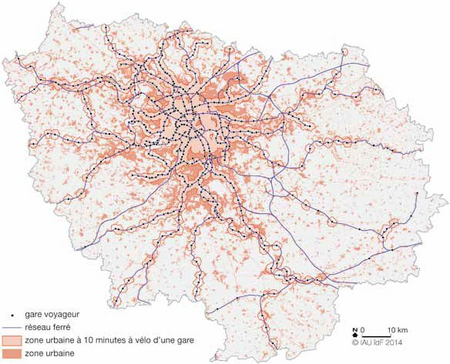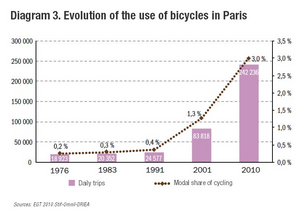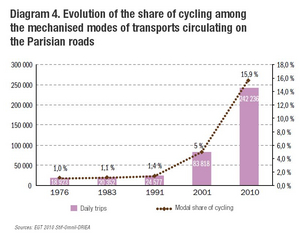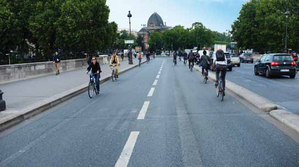Paris is a territory apart in many aspects, and a number of criteria are particularly good for cycling: the quality of bicycle facilities, population profiles, proximity of the residence and workplace, cost of public transport and the low speed of the car (about 15 km / h in circulation excluding parking time). However, these criteria also exist elsewhere, all or part of, especially on the scale of the local area trips, and it is possible to imagine that the adapted cycling policies can also be bearing fruit.
Some actions that are carried out are long-term and involves a major reorganisation of the urban spaces originally calculated for the car (changing urban grid, spatial reconstruction). But actions on the road improvements, the marking out, the services to cyclists and education can be put to work in the short and medium term. Cycling can meet the needs of many proximity trips, to the shops, schools, some centres of employment and, of course, and the stations of the public transport network. We can also calculate that, based on an average of 13 km / h for a trip by bicycle, these are half the urbanised surface area of Paris and almost 70% of the population who are just 10 minutes from a train station.
The relevance of the bicycle policies appears thereby evident, so that those who want to, have the opportunity to practice cycling, and are maintained over time: if Strasbourg today has 13% of the bicycle modal share in the city centre, and 8% on the agglomeration scale, it is above all the fruit of over 30 years of policies in favour of this mode of transport.
The bicycle, of course, is not intended to become a mode of transport at a "regional level", such as the car or the train, but it is clearly possible its use will progress in the different areas of local travel. Paris today on modal shares approaching around ten (8% internal commuting in Paris and up to 13% if we restrict them to male executives!) is indicative of the ability of this mode of transport to take its share in the mobility of Parisians.
